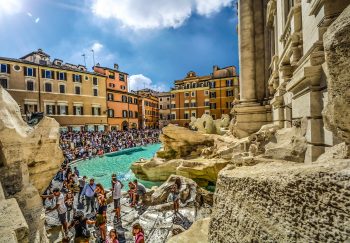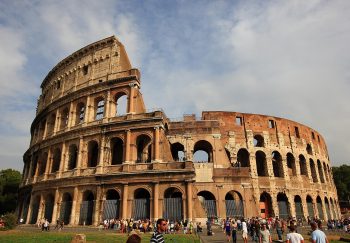The Duomo in Milan is undoubtedly the most striking structure. This cathedral, standing proudly in Piazza del Duomo has been around for more than 600 years and has the history that proves it!
These 6 incredible facts about Milan’s Cathedral will help you understand the secrets behind its elaborate façade.
Our Milan Tours will take you to the Duomo with an expert guide. He can tell stories and provide information.
01. The Duomo is fifth in size among all Christian churches.
Milan Cathedral is still a huge church, even though it has been outdone by St. Peter’s Basilica, Rome, the Basilica of Our Lady of Aparecida, Brazil, the Cathedral of St. John the Divine, New York, and Seville’s Cathedral. It covers a total of 109,641 sq. feet and a whole block in area. This is despite the fact that it is the oldest church on this list.
02. It is home to the most statues
According to some, there are more statues in this cathedral of gothic style than any other structure in the world. Milan Duomo is home to 3,400 statues, 135 gargoyles, and 700 figures. To fully appreciate the architectural beauty of Milan Duomo’s most famous silhouette, climb the stairs or use the lift to reach the top. The terrazza offers stunning views of Milan and the Alps on clear days. The cathedral’s highest spire is home to the Madonnina statue, a gold-colored statue depicting Mary.
Each gargoyle is a reminder that many hands helped to create Milan Duomo. Photo by schizoform, flickr
03. Your watch can be set by the sundial
A sundial is located on the floor near the main entrance. The clock is lit by the sun from the hole in the wall opposite. It shines the bronze tongue on the summer solstice of June 21 and the meridian at the winter solstice of December 21. Although it is quite old (the sundial was installed in Milan Duomo by astronomers from Accademia Di Brera in 1768), the dial is remarkably precise – it even regulates clocks in the city!
Milan Cathedral has 52 pillars, one for each week of the year. Photo by Jakob Montrasio
04. The little red bulb is worth a look
A spot with a red lightbulb is located above the apse, the arched portion that rises above the altar. This is the location where one of Jesus’ nails was allegedly put. Each year, the archbishop from Milan climbs to the top in a wooden basket decorated by angels every Saturday close to September 14.
Although the basket was built in 1577, it was substantially reconstructed in 1701 to accommodate the angels. You must be there at the right moment – the nail is displayed at the altar from Monday after vespers until it’s taken down again.
Each statue watches over the city and its history, as it unfolds. Photo by Gina Mussio
05. It took thousands of workers, a brand new canal system, and more than six centuries to complete.
Officially, the construction of the Duomo was begun in 1386 by Bishop Antonio da Saluzzo. It was also supported by Milan Gian Galeazzo Viconti, who had grand visions for the cathedral. Although the original project was started in terracotta, the magnificence of the project was realized when Condoglian marble was imported from Lake Maggiore. This pink-hued, white marble is the foundation of the entire building.
Canals were built to transport it from Candoglia’s quarries. They also led to the construction site. Evidence of this can still be seen along the navigli, which are canals that were left over from the network of canals in Milan.
The construction of the Cathedral in Milan involved thousands of artists, sculptors, and skilled workers. The project was designed by architects from all over Europe. It had at least 78 different architects. As the project grew, it got more complicated. The church was dedicated in 1418, but the nave was not completed at that point. The heavy construction went on for 200 more years.
06. It’s not over yet!
It remained unfinished for many centuries after its consecration at Milan Cathedral in 1418. The cathedral remained unfinished because of politics, indifference, and lack of funds.
Napoleon actually completed the façade and started the construction of the final stages in the early 19th Century. This cathedral could be the longest-working in the world, considering its ongoing construction. The building was cleaned over a five-year period. Routine cleaning and restorations are ongoing to maintain its beautiful stone.


